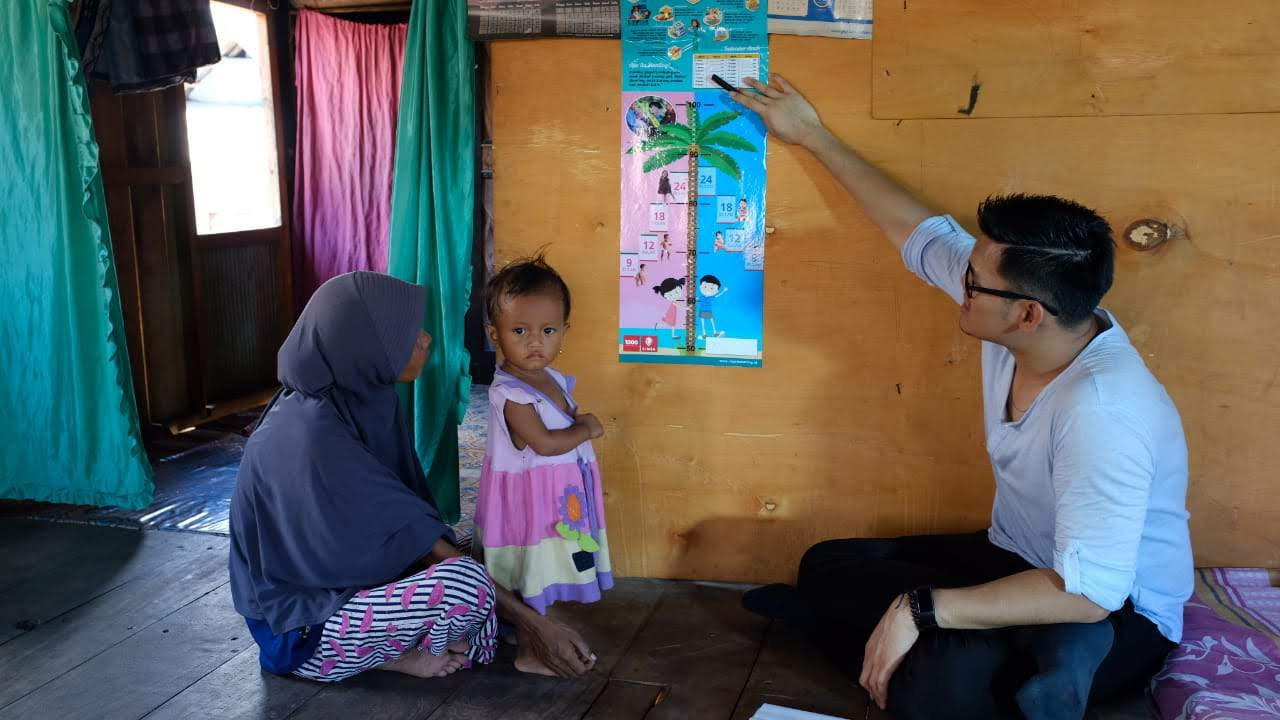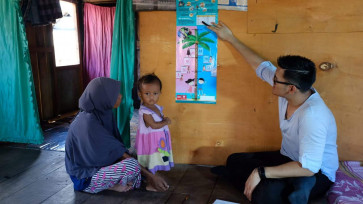Popular Reads
Top Results
Can't find what you're looking for?
View all search resultsPopular Reads
Top Results
Can't find what you're looking for?
View all search resultsLocal initiatives on stunting need government support
In regions with a high stunting prevalence, the current health budget allocation from the central government is insufficient to support local initiatives, even while government regulations oblige villages to boost their health budget.
Change text size
Gift Premium Articles
to Anyone
Y
uli took her son Atu to the local health center in Pejeruk, Mataram, in West Nusa Tenggara, to measure his height against the colorful chart mounted on the wall. But she blinked when Atu leaned back and his head touched the line that indicated the average height for a 9-month-old boy.
“How old is Atu?” the field officer asked, glancing back and forth from the crumpled measurements of the World Health Organization in her hand to the wall chart.
“Nineteen months old,” said Yuli.
Atu was three standard deviations below the median height for his age. According to the WHO Child Growth Standards, he was 7 centimeters shorter than his peers.
The WHO standards are used universally for evaluating child growth. The WHO refers to this growth curve as a reference for how children “should grow” in all countries, as it views that unconstrained growth of economically advantaged breastfed infants and children does not vary substantially.
Based on the WHO standard, the Indonesian 2013 Basic Health Survey (Riskesdas) estimates a 37.2 percent stunting prevalence and 12.1 percent wasting prevalence in children under the age of 5 years. However, only 2.5 percent of children present both wasting and stunting. The majority of the children were either short with normal weight (27.4 percent) or short and overweight (6.8 percent). This had led to skepticism regarding the association between poor nutrition and ill health, and growth of Indonesian children.
Leading Indonesian pediatricians argue that most of the “stunted” children are short for reasons other than nutritional or health. The WHO standards may not be an appropriate reference for assessing undernutrition in the Indonesian population. We should distinguish between children who are pathologically short and need medical intervention and healthy children who would not benefit from any intervention. This is to prevent the spending millions of dollars on unnecessary and erroneous interventions.


















